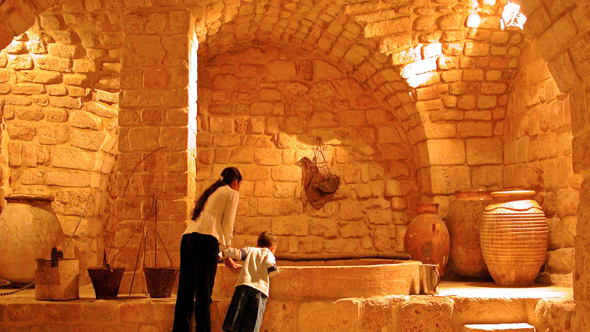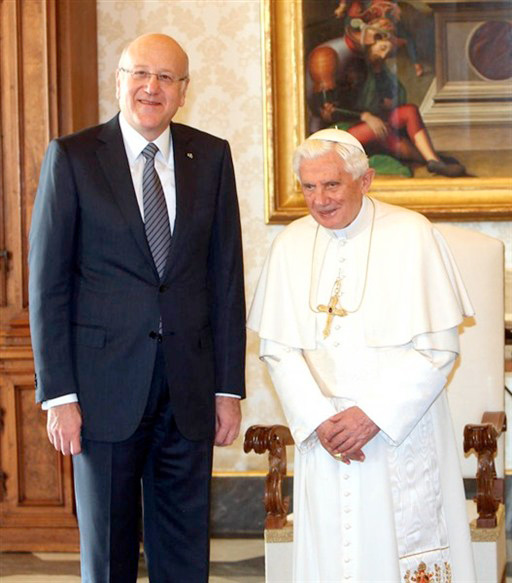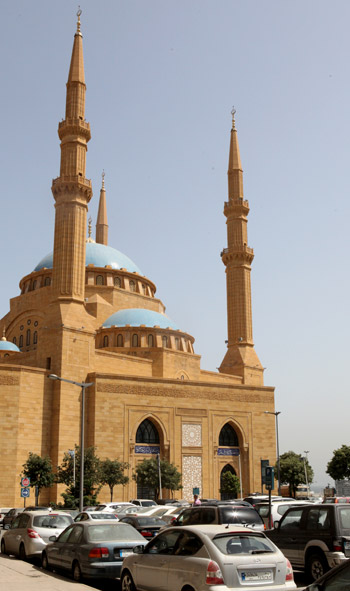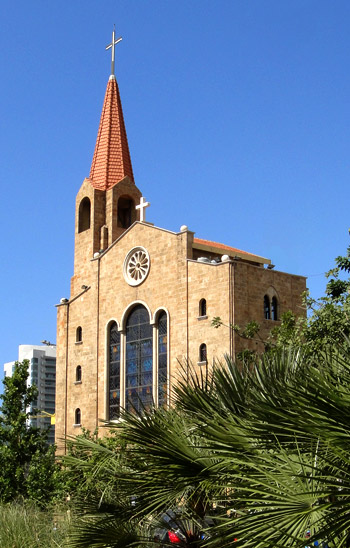Role of Religion in Lebanon: Culture of Tolerance, Openness and Diversity
The Lebanese are famous for their openness and tolerance. That Lebanese hospitality, whether at a Muslim or Christian restaurant, hotel or cultural event, is world-famous is no coincidence.

Tolerance, Openness and Diversity Defines Lebanon
When Pope Benedict XVI. headed to Lebanon in mid-September 2012, people were once again reminded that the Near Eastern country has a mixed society with many different ethnic groups, political fractions and religions.

Few people in the West know that the Arab republic’s President is always a Maronite Christian. The Maronite church is an Eastern fraction of the Roman Catholic Church and stands in full communion with the Holy Vatican in Rome. The incumbent President, Michel Sulaiman, took office in May 2008. Sulaiman, a career-soldier with the rank of Commander, is a Maronite Christian and he became Head of State not because the Maronites had a bigger election campaign budget but because the constitution demands that while the Prime Minister must be a Sunni Muslim (Najib Mikati), the President must be a Maronite Christian.
Outsiders often have difficulty in judging whether a Lebanese person they know is Muslim or Christian. Usually the first name gives the answer. Names like Mohamed, Abdulmajid, Abdulhakim, Zouheir or any other of the 99 names of Allah indicate that the person is a follower of Islam. Christians often have French first names like Michel, Joseph, Juliette or Marcel (exceptions prove the rule).The Speaker of Parliament has to be a Shiite Muslim. Nabih Berri, Head of the Shiite Amal movement (Amal is Arabic for hope), has been Speaker of the Lebanese National Assembly for more than a decade (with interruptions).
This is the unique feature of Lebanese politics, as people used to say. Lebanon has 4.2 million inhabitants but six million candidates for all top posts in the government.
The mighty Armenian community, which mostly resides in the coastal city of Jounieh, a 30-minutes drive north of Beirut, must not be neglected when studying Lebanon. Armenians have always been a strong pillar of Lebanon’s business life and their strong sense for helping each other within the community has brought them a high reputation and admiration in the Arab world.
“Once a small minority, the fast-growing Shiite community achieved influence and respect even from the Christians after its major party Hezbollah drove out the Israelis from the south of Lebanon in 2000” …
The influence of the Armenian Church can be seen in the center of the capital. Near Beirut’s Martyrs’ Square, the beautiful, white-painted Armenian Orthodox church cannot be missed. In plain daylight the cathedral reflects the sun so brightly that tourists are blinded by it.
This is the core of Lebanon’s peculiarity. The beauty of the country and its diversity.
The fragile balance between the 18 different ethnic and religious groups in a country with roughly 4 million inhabitants is mirrored in the Levantine state’s daily political life.
Lebanon is the only true democracy in the Arab World. However, the democracy comes at the cost. Due to this fragile balance, political stability in Lebanon can be challenging.
No census has been carried out since 1932(!), but researchers agree that the majority of the population belongs to the Shiite fraction. Once a small minority, the fast-growing Shiite community achieved influence and respect even from the Christians after its major party Hezbollah drove out the Israelis from the south of Lebanon in 2000, after fighting a highly sophisticated guerilla war against Tzahal, as the Israeli army is called.

The architectonic mix of Mosques and Catholic and Armenian Churches in central Beirut (there is even a Synagogue in the government district) creates the impression of a religious harmony that hardly exists in other parts of the world.
The Lebanese are famous for their openness and tolerance. That Lebanese hospitality, whether at a Muslim or Christian restaurant, hotel or cultural event, is world-famous is no coincidence.
Unfortunately, the different confessions have not always lived peacefully side by side. Even before the devastating 15-year civil war broke out in 1975 intrigues and corruption were rife within the religious groups. The strong links within religious groups who aim to take over power, even if this damages other confessional fractions, are also called sectarianism.
A short history of Lebanon’s Civil War
The civil war broke out due to a power struggle between Christians and the Palestinian militia of Yasser Arafat’s PLO, who fled to Lebanon after they were expelled from Jordan by King Hussein during the Black September in 1971 (the Jordanian Army crushed the PLO after the organization hijacked civil planes and blew them up at the airport in Amman).
When the PLO started to install checkpoints in Lebanon and to spread its wings in the economy, the Christians saw their influence in danger. What began with sporadic shootings in the streets of Beirut quickly transformed into an all-out war in which the fronts and alliances changed on an almost monthly basis.
Today, the PLO in Lebanon is history. The Shiite movement Hezbollah (Party of God), has become the most powerful fraction in the state in relation to military might and financial resources. Hezbollah fought a month-long war with Israel in 2006. While Tel Aviv had total air superiority, the Israeli army did not manage to stop the rain of rockets on Haifa and most cities in the north of Israel. In addition, the Israeli Merkava tank became an easy target for Hezbollah’s anti-tank missiles. According to U. S. intelligence estimates, some 60 Merkava tanks were destroyed by Hezbollah fighters. The war ended with some 1,000 Lebanese people killed, while Israel lost over 600 soldiers, according to the U. S. intelligence report.
Technically, Beirut and Tel Aviv remain at war. Since August 2006, a UN-brokered armistice is observed by the “Blue Berets” in south Lebanon, and offshore by German marine forces. After the war, the Hezbollah quickly rebuilt the south of Beirut.
Sectarianism returned to Lebanon’s stage when Saad Hariri, son of the late Prime Minister Rafic Hariri, accused Hezbollah of having orchestrated the deadly bomb plot in central Beirut against his father on Valentine’s Day 2005. He also pointed at Syria, blaming Damascus for being the mastermind behind the attack.

However, Nasrallah showed video footage of Israeli spy drones filming the scene of the crime just hours before the bomb exploded near Hariri’s convoy as “proof” that Israel was behind the plot. The spy drones were hacked by Hezbollah’s IT engineers.
The event led to the collapse of Saad Hariri’s government. A new interim-government under Premier Mikati was formed and Hezbollah is now more the stabilizing force in the government.
Meanwhile, another threat from Syria is looming on the horizon. The outcome of the Syrian civil war remains uncertain but Lebanon with people understanding the horrors of the civil war is succeeding in staying neutral and stable.
A safe-haven of stability admits turmoil. The future is uncertain but Lebanon seems to have developed a unique culture of tolerance and acceptence and perhaps a model for other collapsing Arab entities…